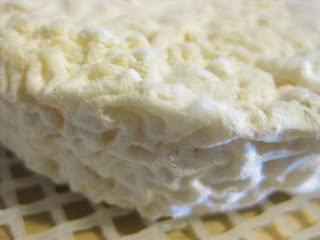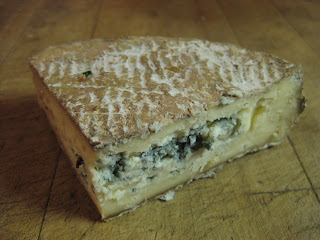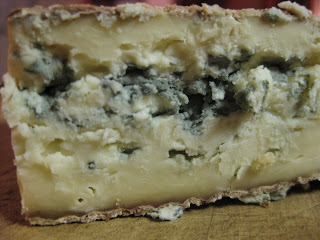
Here is another batch of cheeses which is attacked by the Mucor "poil de chat" (cat's hair). These are also moist cheeses but if they are lightly salted, I don't know. This was the first batch of cheeses I brined in a bath not made from whey. I used tap water and salt to make the mixture. I made these cheeses upstate where I did the brining as well. Our tap water there is spring fed and the pH of the water showed 5.7. This is pretty low for tap water but knowing our soil is very acidic, I was not surprised. Because the pH of the water was so low, I figured it would be all right for the brine bath. The brine bath should have the same pH as the cheese. That's why I like to use whey for my baths, but I had contaminated the whey and it was unuseable.
In retrospect, I suspect the pH of the brine bath was higher than the pH of the cheeses. This would have left the rind greasy. I had noticed some discoloration varying from straw to bright orange. This surface is prone to the growth of black or grey mucor.
I have cleaned the cheeses as I cleaned the ash coated ones, washed with a mixture of water and vinegar after dry brushing. I hope this will take care of it and that the wrong pH equilibrium between the cheeses and the brine bath doesn't lead to any other defects.

























































